Emotional Hong Kong leader Carrie Lam wraps up 2021 policy address, refers to tenure as ‘greatest honour’ – as it happened
- On constitutional matters, Carrie Lam offers to conduct classes for teachers to raise awareness
- Housing and land supply form focus of speech topping two hours

This article has been made freely available as a public service to our readers. Please consider supporting SCMP’s journalism by subscribing.
Hong Kong leader Carrie Lam Cheng Yuet-ngor delivered her last policy address on Wednesday morning with less than six months to the chief executive election, as speculation mounts over her bid for a second term.
A highlight of the address was a massive plan for a northern metropolis, and proposals to restructure the government.
Our live updates below captured the latest on the policy address. Reporting by Joyce Ng, Denise Tsang, Victor Ting, Tony Cheung, Jeffie Lam, Andrew McNicol, Rachel Yeo and Ng Kang-chung
3.33pm
Lam meets the press
Hong Kong’s leader will now hold a question-and-answer session with the media after delivering her final policy address. Watch it live here:
2.15pm
Policy address ‘not a leadership manifesto’
Bernard Chan, convenor of Lam’s Executive Council, says her blueprint looks to position Hong Kong as a leading innovation and cultural hub, as well as a financial one.
Observers have suggested that many of the initiatives for achieving that cannot be accomplished in this term, but Chan says that does not mean she is paving the way to enter the leadership race in March.
“Any chief executive will have to deal with those issues,” he says.
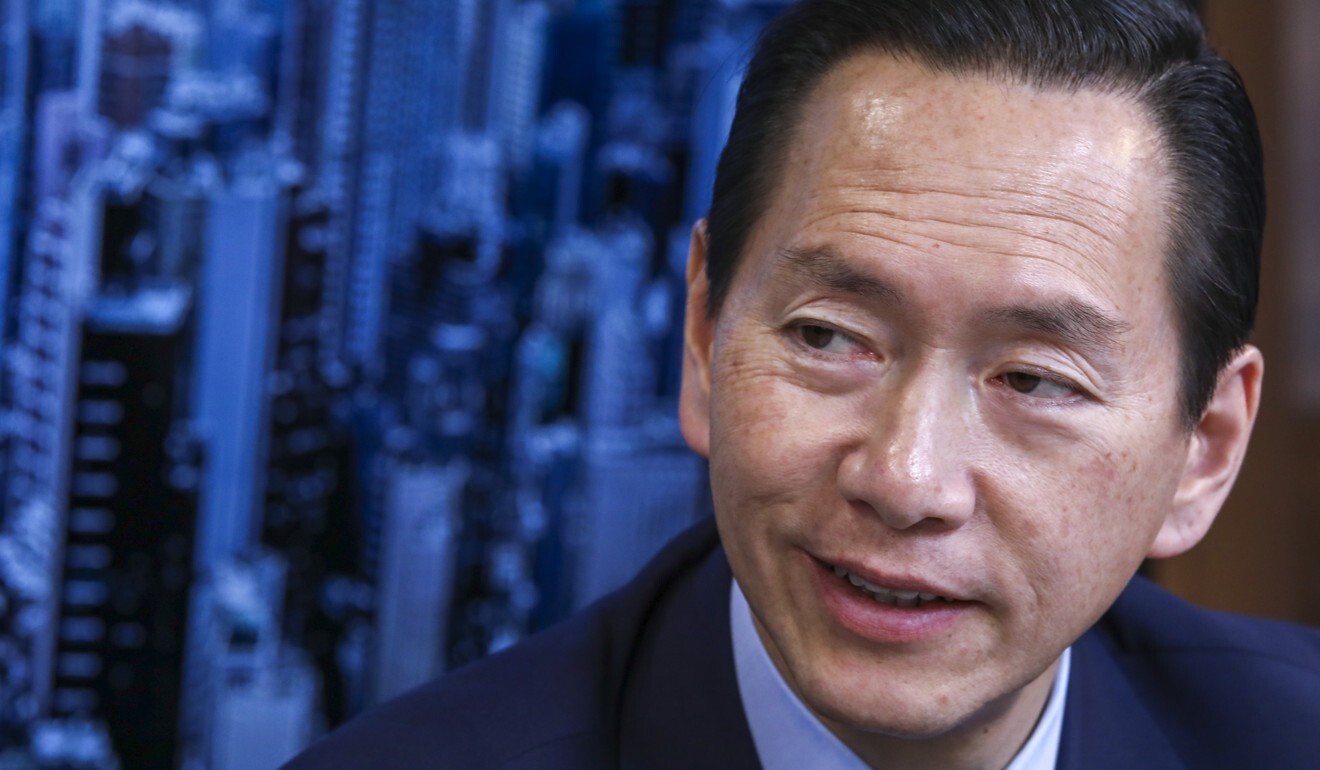
2.00pm
Policies ‘bring new hope’ to residents
Reacting to the policy address, Lam’s deputy John Lee Ka-chiu calls her new proposal to develop a metropolis in northern Hong Kong “groundbreaking”.
“The northern metropolis will complement with the conventional metropolis [the city already has] to take Hong Kong to another level,” the chief secretary says.
He also notes how much importance has been attached to safeguarding national security, not least the need to educate the public on the issue.
Lee leaves without taking any questions from reporters and does not offer a version of his remarks in English, as his predecessor, Matthew Cheung Kin-chung, would do.
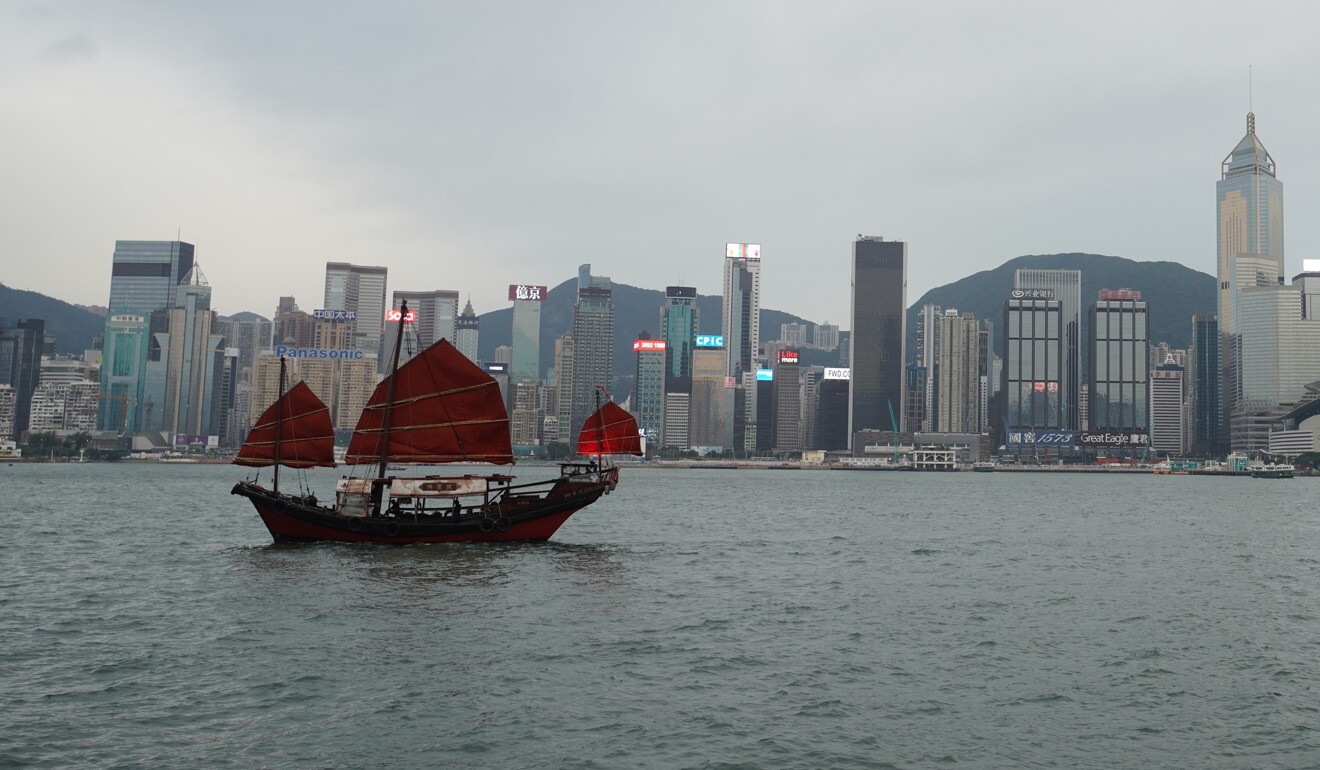
1.25pm
By the numbers
Spanning some 140 minutes, Lam’s 168-paragraph policy speech this year – titled “Building a brighter future together” – was her longest one.
Last year, she read out a 167-paragraph paper in about the same time. Lam’s shortest policy speech was in October 2019, four months into an increasingly violent social unrest that had rocked the city. That year, she read her 53-paragraph, 24-page document in an unprecedented video message after opposition lawmakers chanted slogans to interrupt the session repeatedly.
In 2017 and 2018, Lam’s policy addresses contained over 270 paragraphs spread across more than 70 pages. But she only presented 40-minute summaries to set herself apart from predecessors.

1.21pm
Lam emotional in closing remarks
Holding back tears as she closes the final policy address of this term, Lam says she has played a role in government for decades and describes the chief executive post as her greatest honour.
She thanks the central government and her family for their support, adding she has never been more confident in Hong Kong’s future, noting authorities are planning various events to celebrate next year’s 25th anniversary of Hong Kong’s 1997 return to Chinese rule.
1.20pm
Hong Kong will ‘thrive, flourish’
Lam touches on observations from some quarters that the 25th anniversary of Hong Kong’s return to Chinese sovereignty marks the halfway point in the implementation of one country, two systems.
“So long as the [city] firmly observes and upholds the principle of ‘one country’ and fulfils the requirement of ‘patriots administering Hong Kong’, the ‘two systems’ will definitely thrive and flourish,” she says.
“Hong Kong will continue to be cherished by our country. At this new start, the 2021 policy address has unfolded a new paradigm and set out a new blueprint. Let us stand united and set off to build a bright future together.”
1.19pm
Anger at 2019 pressure
Lam takes aim at the opposition camp and foreign powers, blaming them for giving her a hard time in 2019.
“Within two years of taking office, I came under unprecedented pressure due to opposition to the [now-withdrawn extradition bill] ... the social unrest, the incessant and gross interference in Hong Kong affairs by external forces as well as the impact of the Covid-19 pandemic,” she says emotionally.
“The driving force backing me up in overcoming all these challenges comes from the earnest words of the central government that it will always provide staunch support to Hong Kong, my pledge to always stand by the side of the people of Hong Kong when I took office, and the unfailing trust and support of my family.”
She adds: “I am confident that Hong Kong is much stronger than ever, and I am most convinced that Hong Kong can integrate into the overall development of the country and play an irreplaceable role as our country strides towards the second centenary goal of the nation.”
The chief executive also insists that the city must nurture a new generation with a sense of national identity and social responsibility, as well as an affection for Hong Kong.
1.18pm
Education goals
Local talent is the key to Hong Kong’s future development, Lam says, touting her delivery of an electoral promise to push more resources into education and stressing the importance of early childhood education for all.
Noting a minority of students she says have been radicalised and drawn into “extreme” political activities, she adds that the city’s youth should acquire an early – and correct – understanding of culture, history and the city’s constitutional order.
She expects to make Hong Kong Chinese history an independent compulsory subject at the junior secondary level, revising a curriculum in place since 2018, while confirming that the city’s liberal studies classes are being replaced this year by the new citizenship and social development subject.
1.17pm
Job creation, research talent
To attract talent, the quota for the quality migrant admission scheme will double to 4,000, from 2,000 last year. The scheme last year allowed 1,700 people from more than a dozen countries to come to Hong Kong.
To increase the supply of finance personnel, the Financial Services and the Treasury Bureau will join forces with the Education Bureau and the Labour and Welfare Bureau to establish new professional qualification standards to provide a clearer and recognised pathway for employers and employees.
For research talent, institutions funded by the University Grants Committee will be given more flexibility on nurturing researchers. The over-enrolment ceiling of the UGC postgraduate programme will be further eased from 70 per cent at present to 100 per cent.
1.16pm
MPF loophole to close
Lam pledges to use the next legislative session to finally move forward with the long-debated cancellation of the offsetting mechanism of the Mandatory Provident Fund, Hong Kong’s pension system. The controversial mechanism has long been criticised for creating a loophole that allows employers to take money from their contributions to an employee’s pension to pay out severance.
1.14pm
More jobs for ethnic minority groups
Lam says the government has implemented about 30 measures to enhance support for Hong Kong’s ethnic minority communities, covering the areas of education, employment support, health care, social welfare and social inclusion.
As a next step, the government will set the tone for the rest of city by providing members of ethnic minority groups with more employment opportunities.
1.10pm
No new welfare handouts
Hong Kong’s “uncertain economic future” and its huge financial deficit mean there are no welfare spending announcements to make for the coming year.
Instead, she says, her government will focus on delivering existing policies, which she says have cut the city’s poor population from a pre-intervention level of 1.49 million to 640,000 in 2019.
However, Lam proposes to tweak in the second half of 2022 the old age living allowance by combining the normal and higher rate categories. That will allow claimants to use a higher asset threshold for receiving the higher rate benefit.
1.06pm
Women’s rights
Lam says the government will continue to enhance women’s rights, seeking to boost children’s day care, ban discrimination, offer more breastfeeding facilities in public places, and encourage more women to take up public posts. Last year, Hong Kong increased maternity leave from 10 to 14 weeks, though labour rights groups described that as simply “catching up” with International Labour Organization recommendations while urging even more to be done for working mothers.
1.05pm
A sporting chance
She also confirms a new Hong Kong Jockey Club charities trust, from which HK$300 million will be allocated for science and medicine aimed at improving the city’s ability to compete in international events.
The 2023 completion of the Kai Tak Sports Park will help further promote the city’s sports development, Lams adds, fostering more diversity and providing job opportunities for both young and retired athletes. A full report on the sector is to be submitted by Secretary for Home Affairs Caspar Tsui Ying-wai after discussions with various working groups.
She also thanks Beijing for allowing Hong Kong, Guangdong and Macau to host the China National Games in 2025.
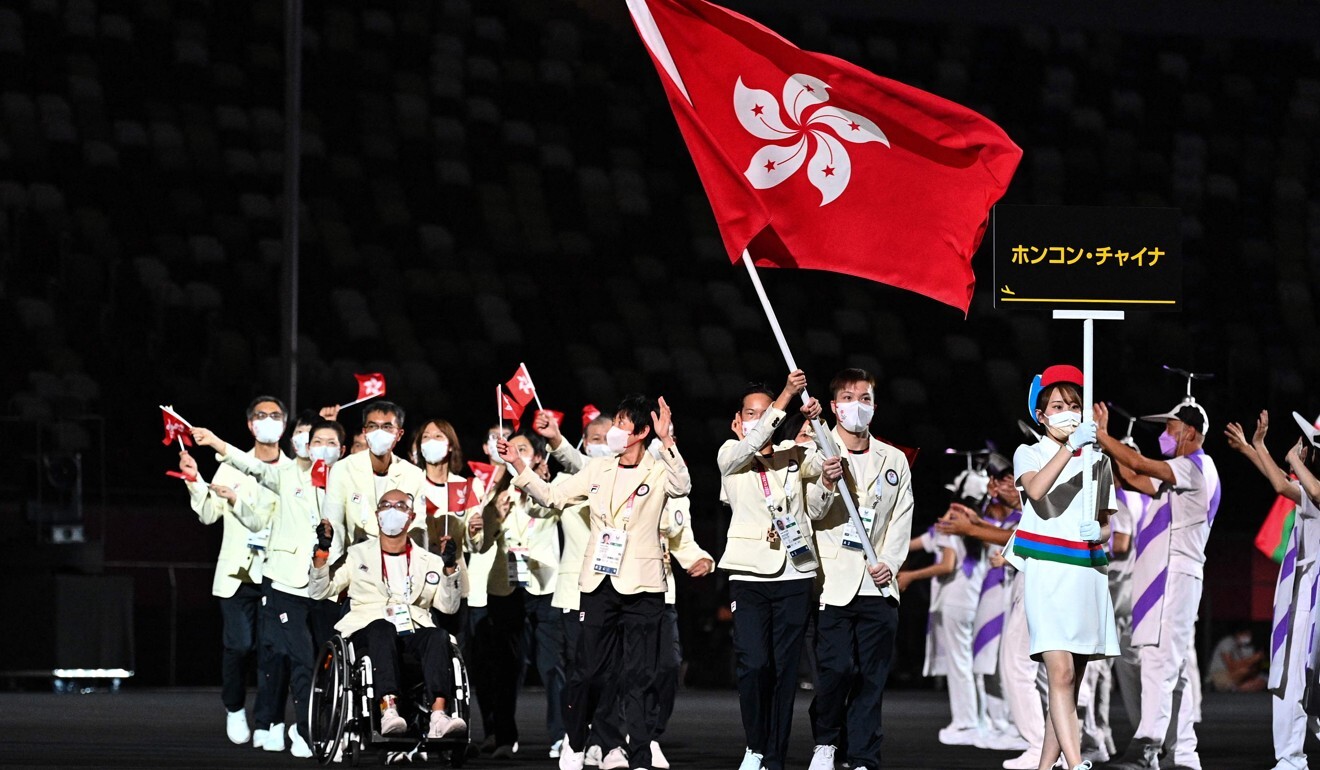
1.00pm
Land reclamation at Victoria Harbour?
Lam notes that Hongkongers cherish Victoria Harbour, but says some hold the view that restrictions against reclaiming land from the waterway should be relaxed by amending the Protection of Harbour Ordinance.
“I am not against reviewing this law that has been here for more than 20 years, but I think amendments should be driven only by an aim to increase the accessibility and public spaces of our harbourfront, rather than making new land to sell or to build housing,” she says.
The development secretary will steer later discussions.
12.58pm
New arts facilities coming
Lam says Hong Kong will complete the development of several arts and cultural facilities in the coming years, notably at the West Kowloon Cultural District and in Kowloon East.
The facilities will help Hong Kong become an arts and cultural exchange centre under China’s latest five-year plan.
12.53pm
New projects ‘can meet land shortages’
Lam says she is confident that two new metropolises being planned will address Hong Kong’s worsening land shortages.
The latest planning study predicts Hong Kong faces a shortage of 3,000 hectares of land over the next three decades to 2048.
The shortfall has increased since the last estimate in 2018, which cited 1,200 hectares.
She adds the following measures will help further increase land and housing supply:
- Making it easier for rural villagers to sell their ancestral land (tso/tong land) to private developers for redevelopment
- A new round of rezoning green-belt zones for development. Steeper gradient sites and those further away from urban centres will be examined
- The MTR Corporation will make available sites covering a total of 170 hectares for building 100,000 private-sector homes in the next decade
- The Urban Renewal Authority will study the redevelopment potential of Sham Shui Po and Tsuen Wan, in addition to similar studies on Yau Ma Tei and Mong Kok announced last month

12.51pm
Thinking green
To meet Hong Kong’s 2050 carbon neutrality target – 10 years ahead of the mainland’s goal – Secretary for Environment Wong Kam-sing is set to reveal a road map of proactive strategies and measures for cutting carbon emissions, she says.
Goals include slashing Hong Kong’s carbon emissions by 50 per cent before 2035, with the Environment Bureau setting up an office to oversee the implementation of all related strategies.
Given that electricity production accounts for two-thirds of the city’s greenhouse gas emissions, utility firms CLP Power and HK Electric will need to stop using coal for electricity generation by 2035.
“This is not unachievable,” Lam says, adding commercial buildings will need to cut usage by 30 to 40 per cent as of 2035, and residential buildings by 20 to 30 per cent.
The government also plans to cooperate with its franchised bus companies to achieve a switch to hydrogen fuel by 2025.
12.50pm
Waterworks
Lam says the government is working with embattled Ocean Park – recipient of a HK$2 billion taxpayer bailout in early 2021 – to overhaul its operations, including allowing it to build a pier to connect the park with other local tourist attractions.
She adds authorities will seek to boost the number of swimming pools and recreational facilities in Southern district, which is being eyed as a future tourism hotspot.
Lam adds the government also plans improvements to the promenade and facilities along Victoria Harbour.
12.48pm
Cycling routes
Lam says the government has been gradually opening cycling routes, spanning Tuen Mun to Ma On Shan. Authorities will continue to work on a track linking Tuen Mun to Tsuen Wan, as well as new ones in the Kai Tak area.
12.42pm
Tech boost needed for ports
Lam says Hong Kong needs to upgrade its container ports, creating a “smart port” network that makes greater use of logistical technology applications.
Authorities will also encourage the development of emerging related industries, such as maritime insurance, while the Marine Department is to establish more offices overseas to support Hong Kong ships abroad.
12.40pm
Focus on technology, innovation
Lam addresses how the city can take advantage of China’s 14th five-year plan, in which Beijing vowed to help reinforce the city’s status as an international financial, shipping, trading and legal services centre. She focuses primarily on how the city can grow its tech sector and kick-start innovation. Plans include boosting the development of hi-tech industrial estates, promoting research and development, encouraging technological investments, and becoming more involved in national research and development work.
12.38pm
More on north metropolis
Lam says the metropolis covers existing new towns in Tin Shui Wai, Yuen Long, Fanling, Sheung Shui and their neighbouring rural areas, as well as six new development areas under planning or construction.
Lam adds that about 2,000 hectares of land of ecological importance, including Mai Po wetlands protected by an international treaty, will be enhanced.
Upon the full development of the entire Northern Metropolis, a total of 905,000 to 926,000 homes, including the existing 390,000 flats in Yuen Long and North districts, will be available to accommodate a population of about 2.5 million, she says. The total number of jobs there will increase substantially from 116,000 at present to about 650,000, including 150,000 I&T-related jobs.
12.37pm
Foreign firms ‘show Hong Kong strength’
Even though foreign powers have smeared the city since the national security law’s introduction, there are still thousands of foreign companies in Hong Kong, showing that the city’s business environment has actually improved, Lam says.
12.35pm
HK$100 billion for projects
To spur growth, the government will earmark HK$100 billion for annual capital works investment in the coming years. Lam notes that HK$220 billion has already been approved over the existing legislative session.
12.30pm
Creating a mega IT hub
The newly constructed IT park at the Lok Ma Chau Loop will be consolidated into a “technopole” – a cluster of hi-tech and information-based companies – with the nearby San Tin area, growing the amount of land available for development to about 240 hectares. Taken in tandem with the IT zone in neighbouring Shenzhen, it represents a mega tech hub of 540 hectares.
12.28pm
Recognising the tourism sector
Lam says the government values the tourism sector, and will continue to work with mainland cities to attract more travellers from around the world.
The chief executive also says the government will support the modernisation of the city’s agriculture and fisheries sectors.
12.25pm
Praise for universities
Lam praises the city’s world-class universities and award-winning researchers, before announcing plans to consolidate Hong Kong’s position as an global research hub. She says she has accepted University of Hong Kong and Chinese University (CUHK) land-use proposals for a site in Pok Fu Lam for deep research technology, as well as a new site near CUHK for building research facilities to expand the sector.
The aim is to attract international universities to collaborate with local ones, Lam says, while also encouraging local schools to improve their strong relationships with research institutions in mainland China.
12.22pm
Science park expansion
To speed up innovation and technology development, the science park at Pak Shek Kok will be expanded to cover an extra 88 hectares of land.
That will be done by resurrecting a reclamation plan for Ma Liu Shui and taking over the site of the Sha Tin Sewage Treatment Works, which will be relocated.
The new land will mainly be for IT development, rather than residential purposes. The MTR Corporation will be tasked with studying the feasibility of building a new railway station at the current site of Education University’s sports centre at Pak Shek Kok as part of the existing East Rail Line linking Hung Hom with northern New Territories.
The entire development will be complemented with housing, parking spaces, shops and public facilities on adjoining land.
Confirming the Post’s earlier reporting, Lam also says an InnoLife Health Tech hub will be part of her proposed San Tin technology park near the Lok Ma Chau Loop. The hub will be composed of more than a dozen labs.

12.20pm
Mainland legal links
Billing Hong Kong as a leading legal and dispute resolution hub in the Asia Pacific, Lam says the government has invited international bodies such as the Asian African Legal Consultative Organisation to hold its conferences in the city.
12.17pm
Economy upgrades
Hong Kong’s economy will undergo a transformation, Lam says.
The government will serve as a connector and facilitator between China and the West and will actively seek out opportunities for companies, she adds.
Hong Kong’s pillar industry – the financial sector – has been solid despite political storms, the leader notes.
Its stock exchange will study establishing a regime to allow “blank-cheque” companies, also known as special purpose acquisition companies (SPAC), to enable yuan as a settlement currency for cross-border stock schemes.
She says that will further attract family offices to set up in Hong Kong, and support cooperation between Hong Kong Stock Exchanges and Clearing and the Guangzhou Futures Exchange to develop products on carbon emissions trading, which Lam adds will catapult Hong Kong towards becoming a green and sustainable finance hub for the region.
To promote financial technology, a one-stop sandbox network will be studied for testing cross-border fintech applications.
12.15pm
More talent in government
Lam says she hopes there will be an influx of patriotic and capable talent entering the “hot kitchen” of government.
She has tasked the civil service chief with reviewing the promotion and appointment system for officials to ensure people rise up the ladder based on merit.
The government will also consider creating new posts – a children’s commissioner and another for the harbourfront.
That is designed to focus more attention on those policy areas, she says, in the mould of previous successful appointments for sport and heritage.
The government’s information services will also be reformed to improve how policies are communicated.
12.05pm
Rail network expansion into mainland
Hong Kong’s railway will be extended over the border from Hung Shui Kiu in Yuen Long to Qianhai in Shenzhen.
Hong Kong’s planned HK$62 billion (US$8 billion) Northern Link, an MTR rail project serving the western and northern New Territories, will also be expanded to serve the Lok Ma Chau Loop IT hub and the Huanggang checkpoint.
A new station will be built on the East Rail line to provide local rail services to boost traffic flow in the Lo Wu and Sheung Shui districts.
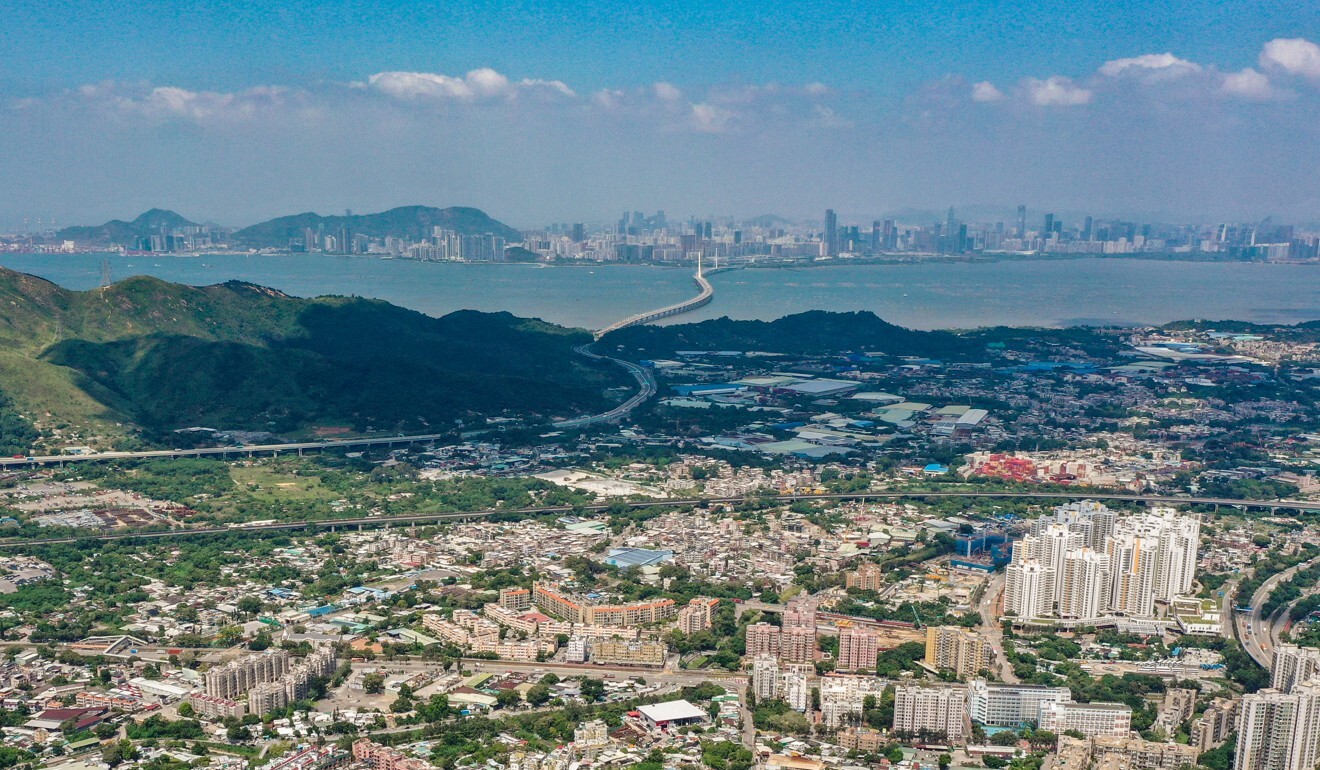
12.03pm
Hong Kong-Shenzhen relations
Over the last four decades, Hong Kong’s relationship with Shenzhen has been close, with both cities setting up various economic and residential zones on either side of the border.
She believes such developments will help the two cities enjoy closer integration under the New Territories North metropolis project, which involves building a new town.
12.00pm
An eye on sports
Lam says she has set up several commissioner roles, including the appointment of a new commissioner for sports. Her proposal for a new bureau comprising culture, sports and tourism will mean the Home Affairs Bureau will no longer oversee sports.
This will be discussed in the new term of Legco, before a proposal is submitted to the next administration. Former Hong Kong leader Leung Chun-ying appointed the city’s first commissioner for sports in 2016, a move that was generally welcomed by the local sports community.
Lam adds that previously, Hong Kong had created new posts of heritage and sports commissioners, which proved to be effective. In the future, she will encourage ministers to appoint more commissioners, such as those for children and harbourfront.
11.50am
Restructuring on the horizon
Lam also reveals a preliminary proposal to restructure the government. That includes the creation of the Culture, Sports and Tourism Bureau to consolidate the culture portfolio and the creative industries, as well as the tourism portfolio currently under the Home Affairs Bureau and the Commerce and Economic Development Bureau.
The Transport and Housing Bureau will be split into two agencies under her plan. The move, she says, is aimed at allowing the former to place more focus on transport management and developing the city’s logistic and aviation industries, while another arm looks into speeding up land supply.
The Innovation and Technology Bureau will cover industrial matters and foster re-industrialisation, while the Home Affairs Bureau will be reshaped into a Youth and District Affairs Bureau.
Lam says she will gauge different stakeholders’ opinions in the coming months and draft a detailed proposal, with hopes that the next administration will consider the strategy.
11.47am
A recap on national security
Lam proposes a five-pronged strategy to further safeguard national security:
- First, taking forward proactively the enactment of local legislation to revive the long-shelved Article 23 provision.
- Second, reviewing or reviving existing legislation to ensure that laws are available to enforcement authorities for action and strict enforcement.
- Third, strengthening the work on the prevention of terrorist activities and proactively boosting public communication, guidance, supervision and regulation.
- Fourth, strengthening national security education and raising awareness of the law and of national security among residents.
- Fifth, implementing further oath-taking requirements for public officers.
11.45am
A northern vision
Lam adds that the northern hub will complement her Lantau Tomorrow plan – a massive reclamation project to the west of Hong Kong Island, aimed at spurring growth.
She also proposes setting aside 150 hectares to build a San Tin technology park near Hong Kong’s border with Shenzhen. The northern metropolis will include commercial and government buildings to ensure ample job opportunities, she promises.
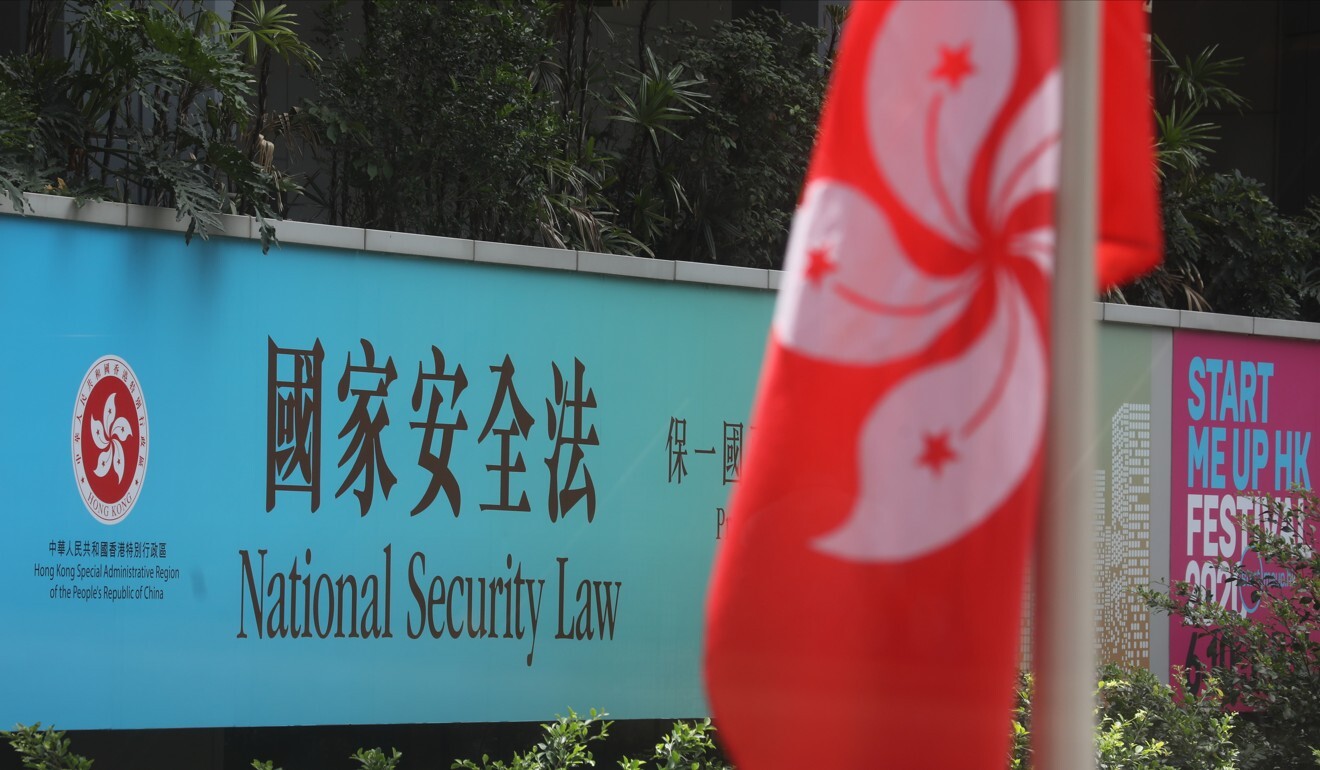
11.33am
Public education on Hong Kong governance
Lam says the Basic Law Promotion Steering Committee will strengthen public education efforts on teaching people about the city’s mini-constitution. The justice secretary will also hold a conference and launch a publication on the Basic Law next April, she reveals.
The city leader says she has told the education minister that she can personally brief teachers to offer them “a better grasp of the constitution status, powers and functions” of the chief executive under the one country, two systems model.
A citizenship and social development subject is set to replace the liberal studies subject in secondary schools.
11.32am
Thanking Legco
Lam praises Legco for approving 46 bills after the mass resignation of opposition lawmakers last November, and for approving HK$320 billion in funding.
She says as the new term for the legislature will start on January 1, 90 lawmakers will monitor the government. She will soon list 40 legislative proposals to strengthen child protection, speed up land development, and improve care services for the elderly and disabled, so discussions among lawmakers and the public can commence soon.
11.30am
Voting reforms
For the Legislative Council election in December, Lam vows to improve polling arrangements and look at ways to allow Hong Kong voters living on the mainland to take part.
She says the Constitutional and Mainland Affairs Bureau will work closely with the Election Committee, which is tasked with picking the city’s leader, and other lawmakers under Beijing’s electoral shake-up, to ensure the principle of “patriots ruling Hong Kong” will be fully implemented.
11.24am
Boosting national security awareness among civil servants
Lam says the government needs to further educate civil servants in boosting their awareness of protecting national security. A temporary civil service academy will be established soon, while a permanent one will be set up in Kwun Tong, she adds.
11.21am
RTHK told: support national identity
Lam says she has required the director of broadcasting at public broadcaster RTHK to strengthen production standards towards raising people’s awareness of their national identity.
11.21am
Cross-agency focus on national security
Lam adds that authorities will also continue to focus on safeguarding national security via other legislation, such as the recent review of the city’s film censorship law. Different government agencies will strengthen their work on the prevention of terrorist activities and boost national security education, as well as raising awareness of the law and national security among residents.
The government will also implement further oath-taking requirements for public officers, including for all members of the newly formed Election Committee.
11.18am
Article 23 will counter anti-China threat: Lam
Lam says President Xi Jinping’s July 1 speech marking the 100th anniversary of the Communist Party was one of his most important speeches on Hong Kong in recent years, highlighting the requirement for fully implementing the one country, two systems model.
Lam says the actions of anti-China destabilising forces have repeatedly threatened national security in recent years, and Beijing has responded swiftly by imposing a security law on Hong Kong.
But there are many things the Hong Kong government can do, such as reviving the long-shelved Article 23 legislation, she adds.
11.17am
The scorecard on health and welfare
Touting her policy credentials in health and welfare, Lam says government recurrent expenditure in these two areas has increased by 53 and 62 per cent, respectively, to HK$95.9 billion and HK$105.7 billion this financial year, compared with four years ago.
She adds that under her watch, statutory paid maternity leave has increased from 10 weeks to 14 weeks, and her administration has “largely finished” legislative preparatory work for the cancellation of the offsetting mechanism of the Mandatory Provident Fund, Hong Kong’s pension scheme.
11.12am
96 per cent of initiatives achieved
Lam says 96 per cent of the 900 initiatives set out in her past four policy addresses have been fulfilled. In terms of the financial regime, according to her, measures such as tax incentives, green and silver bonds, and an annuity scheme, as well as revised listing rules for the stock exchange, have been put in place. Other initiatives include HK$130 billion in investment pumped into innovation and technological development.
11.12am
Hong Kong ‘back on right path’
Lam opens the final policy speech of her term by hailing the dual protections of the Beijing-decreed national security law and the central government overhaul of Hong Kong’s electoral system.
“It is time for us to start over again,” she says. “But we shall bear in mind that this situation is not easy to achieve.”
She notes how the calmness in the chamber stands in stark contrast to the events of two years ago, when her policy speech was disrupted by lawmakers who “opposed China and disrupted Hong Kong” in what she says were attempts to subvert the government.
“Hong Kong has returned to the correct path of the ‘one country, two systems’ principle,” she says, referring to the city’s governing principle.
“Hongkongers need to understand one country, two systems more, and be proud of their Chinese identity.”
11.05am
Peaceful entrance
Unlike in the past, when opposition lawmakers chanted slogans as the chief executive entered the chamber, the atmosphere at Legco is muted this year as Lam makes her entrance. Most opposition legislators resigned almost a year ago in protest against the unseating of their peers.

11.05am
Subdivided residents ‘waiting too long’
Outside the Legco building, Leung Che-cheung, honorary president of the New Territories Association of Societies, expresses disappointment at how long residents of subdivided flats have been waiting for public housing.
“The wait for public housing is 5.8 years, which is very disappointing, and many people need to stay in cage homes and subdivided units,” says Leung, also a lawmaker with the Democratic Alliance for the Betterment and Progress of Hong Kong.

